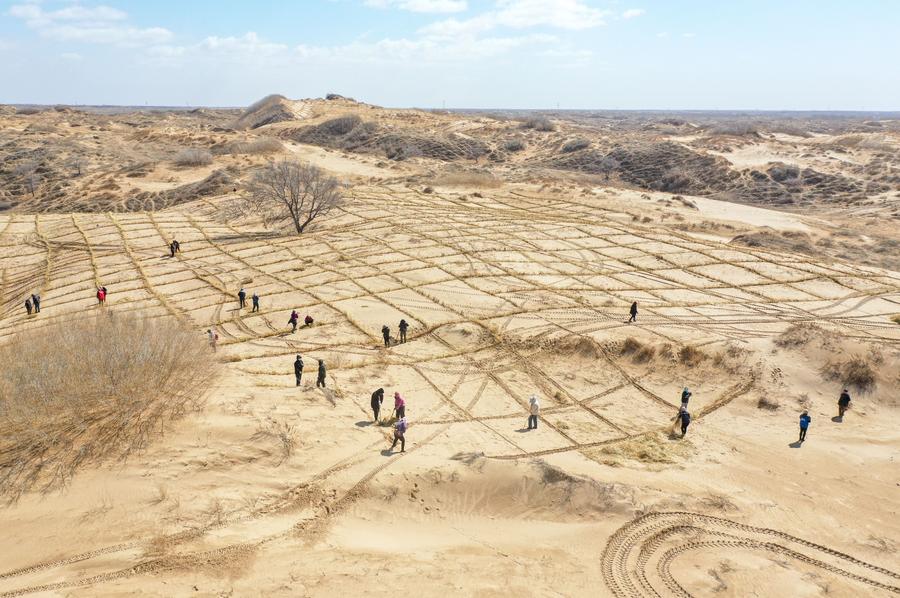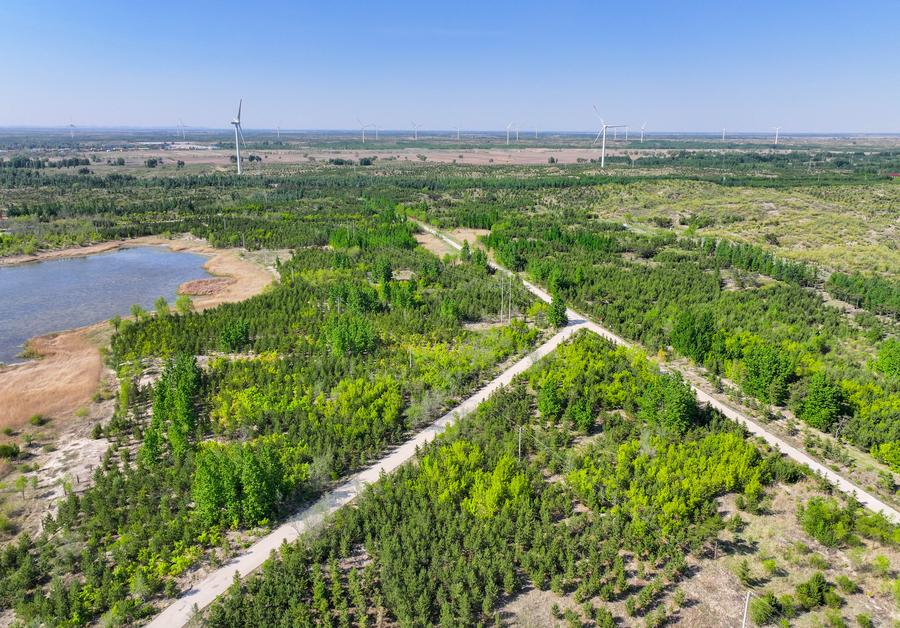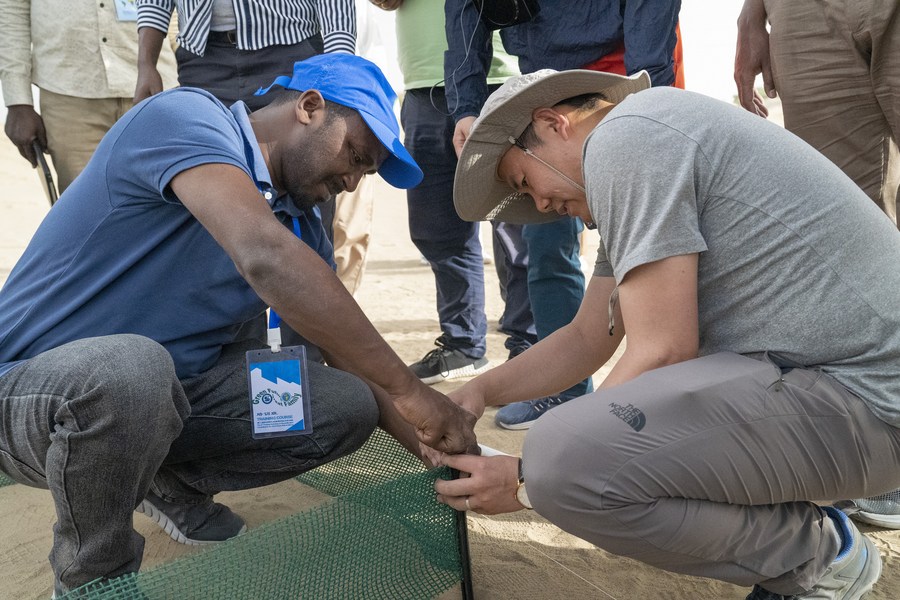
BEIJING - As Monday marks the World Day to Combat Desertification and Drought, the pressing challenge of land degradation and desertification has once again aroused global attention.
China, one of the countries with the severest desertification, has made significant progress in curbing the expansion of deserts after decades of relentless efforts, taking the lead in achieving zero net land degradation worldwide.
From 2009 to 2019, desertified land in China had a net decrease of 50,000 square km, a significant change compared with an expansion of 3,436 square km a year at the end of the last century, according to China's National Forestry and Grassland Administration.
How has China made such a great achievement? More importantly, what does it mean to the world?
Chinese researchers have developed many new technologies to control the sand such as using lab-cultured cyanobacteria to form biological soil crusts on the surface of the sand, which can cut the crust formation time from 10 years to only one year
Innovative solutions
"China is one of those countries that really are extremely advanced in terms of land restoration in many of these deserts," said Ibrahim Thiaw, executive secretary of the United Nations Convention to Combat Desertification (UNCCD).
Over the decades, China has kept exploring new technologies and innovative methods to combat desertification.
To prevent traffic arteries and newly planted grasses and trees from being quickly engulfed by moving dunes, the "straw checkerboards" - a dune fixation technique in which straw is placed on the desert surface in the shape of a checkerboard - were applied over 60 years ago in Zhongwei, a city near the Tengger Desert in Northwest China's Ningxia Hui autonomous region.
Within the checkerboards, the surface of the sand forms a hard crust over time which prevents the sand from moving.
ALSO READ: Beating back the desert

Now, Chinese researchers have developed many new technologies to control the sand such as using lab-cultured cyanobacteria to form biological soil crusts on the surface of the sand, which can cut the crust formation time from 10 years to only one year.
In addition, intelligent and innovative equipment has been developed and applied to improve the efficiency and effectiveness of sand control, such as the walk-behind paving machine that can more efficiently "plant" straw nets and the AI-powered automated seeding machine.
China also has been promoting the precise sand control method, such as adjusting the density of afforestation according to the capacity of local water resources, avoiding the decline of young and medium-sized trees, and realizing a sustainable growth of vegetation.
China has cultivated the world's largest man-made forest in Saihanba in northern China's Hebei province, and created a China model of sand control by greening and transforming the vast desert in Kubuqi, Inner Mongolia
Thanks to decades of sand control efforts, China has achieved the historic transition from desert displacing human settlement to green oasis replacing desert. China has cultivated the world's largest man-made forest in Saihanba in northern China's Hebei province, and created a China model of sand control by greening and transforming the vast desert in Kubuqi, Inner Mongolia.
ALSO READ: Desert restored via grassland protection
Global cooperation
While taking the lead in combating desertification over the past decades, China has extensively carried out international exchanges and cooperation, sharing its experience with countries that face similar challenges.
In 1977, China shared the anti-desertification technique used in Zhongwei at the UN Conference on Desertification in Nairobi. Now the technique, which is convenient, cheap and environment-friendly, remains a crucial way of stopping sand encroachment worldwide.

Since 2005, researchers from Xinjiang Institute of Ecology and Geography (XIEG) of the Chinese Academy of Sciences have been sharing mature desertification control technologies with Central Asia and Africa through workshops and field practice.
"China has a lot of experience in restoring degraded areas and making them productive, so we need to strengthen our long-term relationship with China in terms of transferring knowledge, technologies, and also in capacity building," said Endrias Geta, state minister of the Ethiopian Ministry of Irrigation and Lowlands, when attending a desertification control training workshop held in June last year by the XIEG.
Uzbek scientists have long collaborated with Chinese scientists in seeking solutions for ecological crisis in the Aral Sea, once the world's fourth-largest lake which shrunk drastically from 67,000 square km in 1960 to just 6,000 in 2020
Uzbek scientists have long collaborated with Chinese scientists in seeking solutions for ecological crisis in the Aral Sea, once the world's fourth-largest lake which shrunk drastically from 67,000 square km in 1960 to just 6,000 in 2020.
Over the years, research institutes from both sides have set up several demonstration zones for water-saving fields and introduced various water-saving technologies to the region.
READ MORE: Green efforts gain more ground
China has been actively fulfilling its obligations under the UNCCD, establishing an International Knowledge Management Center on Combating Desertification in Ningxia in December 2019, which aims to share China's wisdom and experience in combating desertification with other countries all over the world.
Desertification control is a vital task not only for the above-mentioned regions but also with global significance, said Zhang Linxiu, director of the UN Environment Programme-International Ecosystem Management Partnership. A sustainable and prosperous future requires concerted efforts of all countries.


